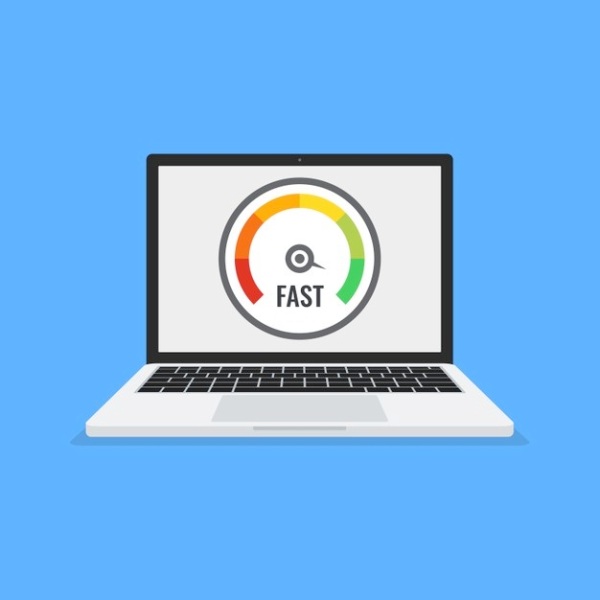Digital transformation in the retail industry isn’t the new concept now because retailers are already doing so many experiments with connected & intelligent devices to offer the latest services to customers. They reguarly try to create a advanced digital ecosystem to enter new markets and reshape the business trends.
One of the best digital transformation technologies is IoT (Internet of Things) that offers retailers an opportunity, mainly in three areas: the supply chain, customer experience, and new channels and revenue streams.
Role of IoT in Retail Digital Transformation
IoT has two roles inretail transformation. It is working for customer benefits, and another, it focuses on offering you operational benefits.
What benefits customers can attain from the retail transformation:
1. Contactless Checkout
The most remarkabletransformation in the retail industry is contactless checkout that aims to provide a user-friendly shopping experience to your customers. When they visit your online retail stores, it lets your customers avoid queues and kiosks by converting their smartphones into a POS. There is no need to download the mobile app even. It offers an advantage of contactless payments with a full-self service experience.
“COVID has increased the need for autonomous checkout and skyrocketed the technology solutions after having the demand from retailers. There are lot of retail technology service providers have this chance to figure out the need and launch according to the retailer and customers needs. Caper is one of the example, according to a news published at zdnet.
What to like is about the autonomous checkout that allows people to scan the product automatically, meaning customers have no need to do physical scanning of objects from any expert.
2. Smart Mirrors
The reason for transformation in the retail industry can be Smart Mirrors, also known as Magic Mirrors. It may be used in the bathrooms of high-end hotel rooms. The presence of a television remote control often gives surprise to guests. When the power button is pressed, a tiny television screen appears “magically” inside the mirror. This form of solution eventually can be found in retail, where it allows simple ads to be shown on mirrors to impress the shoppers.
For example, to help shoppers dress virtually, there are intelligent augmented reality softwares in market that allows customers to check how they are looking without going into a dressing room. Customers can try as many clothes virtually to examine their looks before making a purchase from retailers.
3. Barcode Scanning
It is possible for customers to scan a barcode on a garment to know its information. They can also check different sizes or colors on retailers’ eCommerce sites to improve their personal experience.
Apart from that, customers can use wearable devices or their smartphones to check the product’s reviews, or read comments about products on social media, and scan much more information about the item.
4. Digital Coupons
The major IoT role in retail transformation is to give customers’ seamless shopping experience by hook or crook. With an IoT- based system, customers can easily access personalized digital coupons after entering the store. It helps them save more according to the actual price of items.
Every day, retailers add coupons and give discount options to customers according to their marketing strategy because it helps them increase customer loyalty and provides retailers a way to make aboost in their sales conversion rates.
5. Real-Time Content
Content is the real king. If you don’t show products with relevant specifications or descriptions, your customer will predict that you don’t have etiquette for doing business or don’t know what they are looking for.
The reason to visit your retail website is to buy products from the comfort of homes. As a retailer, if you don’t consider customers’ changing dynamics, how they will connect or shop from your brands in the future. Including the IoT-connected digital signage as the retail transformation is necessary. It allows you to publish the content to stores in real-time and lets you customize it based on specific regions, cities, or stores.
6. Smart Shopping Carts
Recently, Amazon has introduced its new shopping smart cart, namely The Amazon Dash Cart, which has a touchscreen feature that enables customers to access a scanner for coupons and Alexa shopping lists.
There will be a QR code that you can find in the Amazon app. When the cart is available, you will be able to start using it after making a simple sign-up. After Sign in, you can place your bags in the cart and start shopping. After completing this process, you can simply exit from the store and receive a receipt on your email, which will be shared by Amazon.
Operational Benefits
Automated retail technologies such as automated checkout, drones, and robots help the retail industry experience such a big transformation. Above, we already have discussed automated checkouts, and you may remember that feature is mainly designed to give benefits to customers. But what about operations benefits?
Smart Shelves
There are hundreds of thousands of products, which the retailers have to display in their e-store because your customer wants more variety, whether it is shoes, clothes, home appliances, kitchen appliances, baby products, makeup, or anything.
Yet, is it possible for you to provide each item all the time? Of course not, you buy products for your customers as per your budget. You decide how much quantity you have to give them. You need to determine when the product will go out of stock and when the product will show available. If you display your products’ availability on a manual basis, it will take weeks or months. To solve these issues, big companies think to bring transformation in the retail sector by providing you an option of Smart Shelves.
Thus, Smart Shelves work based on RFID technology. It can be RFID readers, antennas, or RFID tags that enable you to track inventory automatically in retail stores. It helps you maintain inventory levels and help your customers know that your product is out of stock. In case of non-availability, either they can make a purchase of another product or visit someday again to buy that product.
Smart Robots
Smart robots also work automatically to help in areas ranging from product assembly, stock replenishment to hazardous materials handling. Due to the drastic increasing rate of COVID-19, many retailers have started using automation in their store operations.
One of the automation practices is smart robots that give you assistance for order picking or provide you inventory visibility to optimize your business operations better. Such robots can identify your customers’ behavior patterns and capture more granular data about the products that are available on the shelves.
Some advantages of including smart robots in your retail digital transformation journey are, it gives you more accuracy and efficiency while managing inventory. You can track stock levels, product movement, product placement in real-time. It is ideal for correct and accurate tagging, stocking, and pricing of products.
Additional Operational Benefits to Consider:
- Smart Packaging that monitors the age or freshness of perishable goods.
- Smart Price Tags that you can change in real-time and based on trends and other demands.
- Sensors help you check the age of perishable items and their quality. It notifies the suppliers that they have a need to give either discount to customers or inventory replenishment.
Read More: Role Of IoT in Retail Digital Transformation




